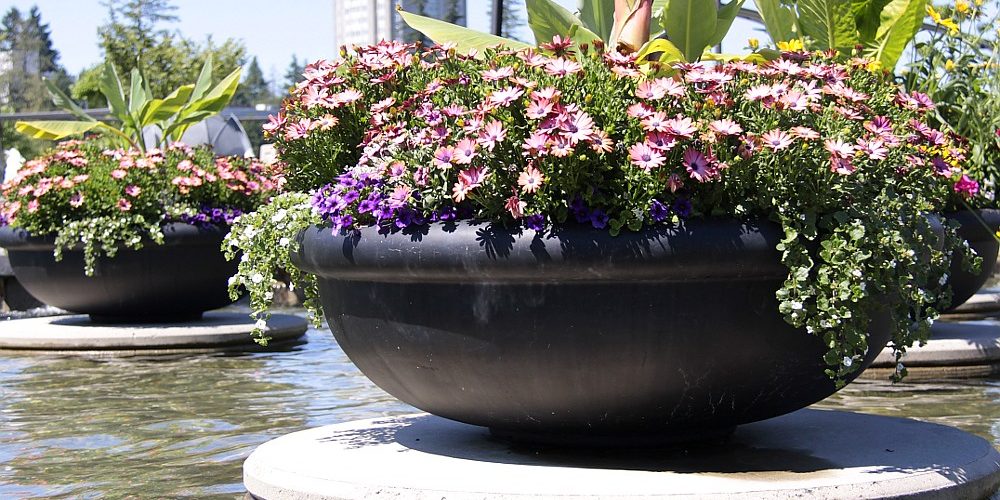10 STEPS TO CREATE A BEAUTIFUL CONTAINER GARDEN
When designing your plant combination, you may want to use the ‘thrillers, fillers and spillers’ method. Thrillers are plants that add height, such as fountain grass, spikes or tall bloomers like XL Dahlias or Salvia. Fillers are the plants that will stay a medium height and fill out the middle of your design. Spillers, like ivy, vinca and potato vine, lobelia, alyssum, or trailing petunias, will drape and fall over the edge of your basket. The size of your pot will dictate how many plants you need, but don’t be afraid to cram in a few more than the spacing requirements on their tags recommend. With our short growing season, and if you water and fertilize regularly, they will look full and nice all summer.
Sometimes, a single variety massed together in a pot can make a powerful statement. Coleus and petunias can be gorgeous like this, and a pot of a single herb like mint or basil can be beautiful even as you harvest from it for your culinary use.
Look at our garden center or online resources for design inspiration, but ultimately, choose the flowers and plants you feel drawn to!
- Pick your plants and container, which must have a drainage hole at the bottom. Where you place your container – full sun, partial sun, or shade – will determine what plants you can grow.
- Cover the container hole with landscape fabric to keep the soil in and the critters out.
- Place approximately one inch of pea gravel or small rocks over the landscape fabric to help drainage.
- Fill 2/3 of the container with a good quality potting soil, such as our potting mix. Our custom blend was designed for container gardens.
- Mix Soil Moist, water-grabbing crystals that absorb excess water and release it back into the soil when needed. Read the label instructions to find out how much to use for the size of your container.
- Insert your plants. Be sure to loosen the bottom of the roots first so they’ll grow out into the soil.
- Fill potting mix around the plants to within one to two inches of the top of the container. This is important! If you fill soil to the top of the container, it’ll make watering difficult. Tamp down the soil around the plants to make sure they’re secure.
- Add Osmocote or your favorite slow-release fertilizer. If you prefer an organic alternative, we suggest replacing Osmocote with a mixture of Dr Earth products. Container gardens need food because they’re watered frequently and nutrients wash out of the soil.
- Top with small gravel – the same kind you put over the landscape fabric – to keep out squirrels and hold the soil in the container when watering.
- Water gently but thoroughly until all the soil in the container is completely wet.
Keep notes about what you planted, as well as pot size, location, etc. Throughout the season, or at least at the end of it, make notes about what combinations you liked, what you learned about certain plants and how they behaved, and any ideas you have for next season’s garden. Take pictures to enjoy throughout our cold, dark winter, and to help you make even more beautiful containers next spring.







